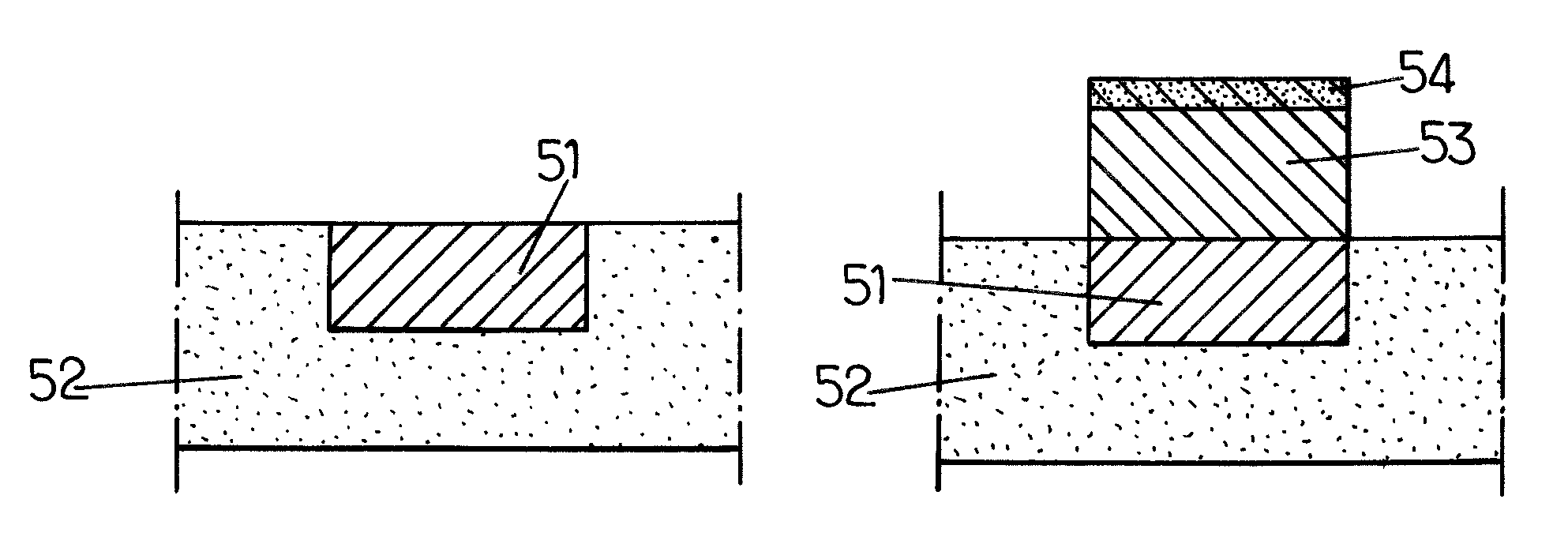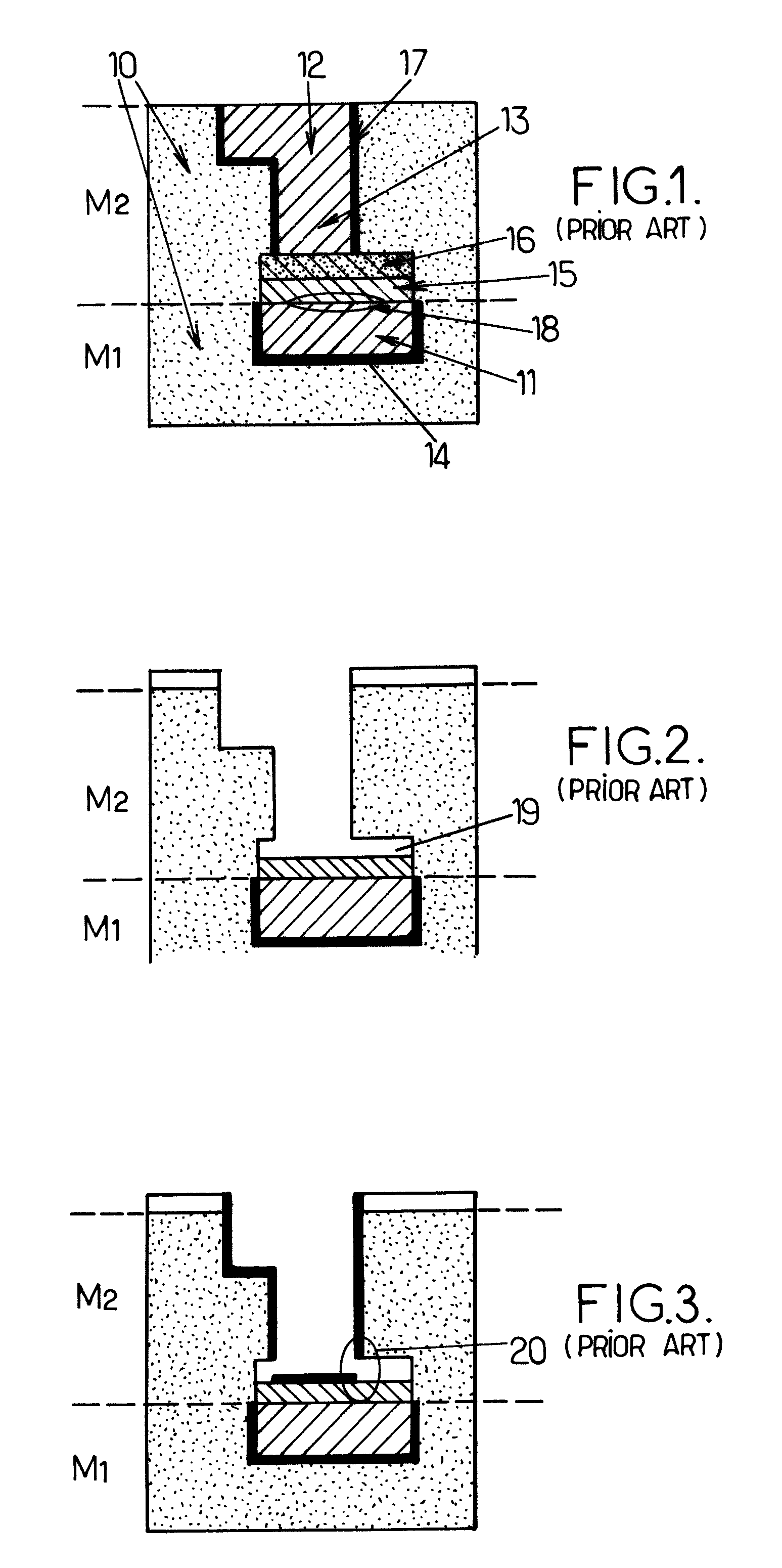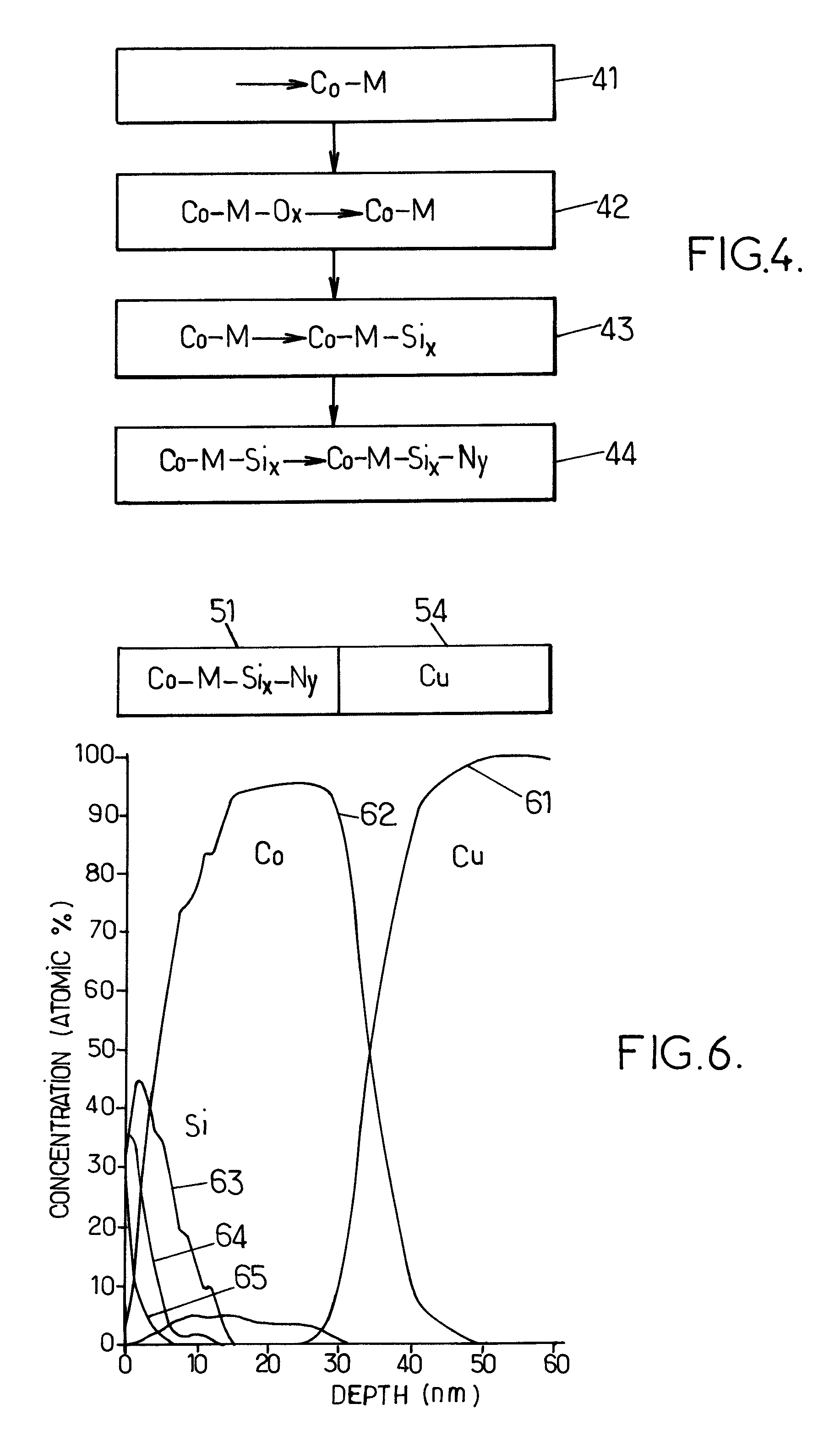Implementation of a metal barrier in an integrated electronic circuit
a technology of integrated electronic circuits and metal barriers, which is applied in the direction of solid-state device manufacturing, electric devices, semiconductor/solid-state device manufacturing, etc., can solve the problems of insufficient prevention of copper atom diffusion across the barrier, the tendency of cobalt-based metal barriers to oxidize, etc., and achieve the effect of improving the anti-oxidation properties of the metal barrier
- Summary
- Abstract
- Description
- Claims
- Application Information
AI Technical Summary
Benefits of technology
Problems solved by technology
Method used
Image
Examples
Embodiment Construction
in Semiconductor Products
[0080]FIGS. 8 and 9 show examples of semiconductor products comprising self-aligned metal barriers obtained according to embodiments of the invention.
[0081]FIG. 8 shows an interconnect structure comprising a plurality of metallization levels M1, M2 and M3. Each of the metallization levels of the interconnect structure comprises, for example, a layer of undoped silicon glass (USG) in which is realized at least one conductive line 96 which is of copper, for example.
[0082]Conductive lines 96 in separate metallization levels can be connected by vias 97.
[0083]Metal barriers 98 with two layers of copper silicide obtained according to embodiments of the invention are situated between the copper portions constituted by the conductive paths 96 and the dielectric material of the interconnect structure 105. It is advantageous for these metal barriers 108 to be deposited in a self-aligned manner on the copper portions only.
[0084]In this example, the vias come into elect...
PUM
| Property | Measurement | Unit |
|---|---|---|
| thickness | aaaaa | aaaaa |
| thickness | aaaaa | aaaaa |
| rector temperature | aaaaa | aaaaa |
Abstract
Description
Claims
Application Information
 Login to View More
Login to View More - R&D
- Intellectual Property
- Life Sciences
- Materials
- Tech Scout
- Unparalleled Data Quality
- Higher Quality Content
- 60% Fewer Hallucinations
Browse by: Latest US Patents, China's latest patents, Technical Efficacy Thesaurus, Application Domain, Technology Topic, Popular Technical Reports.
© 2025 PatSnap. All rights reserved.Legal|Privacy policy|Modern Slavery Act Transparency Statement|Sitemap|About US| Contact US: help@patsnap.com



